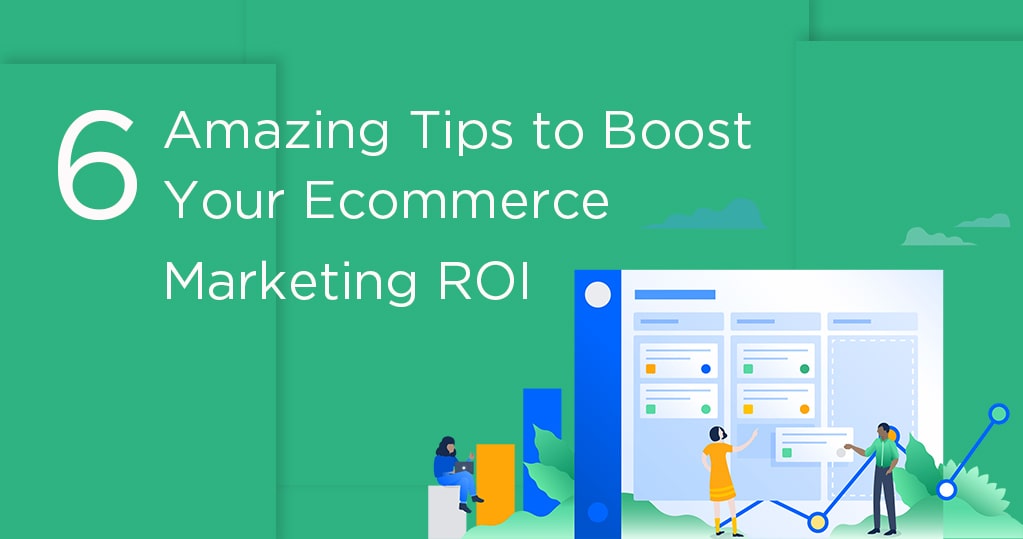Sometimes, ecommerce marketing can feel like a one in a million guesses. You follow all the best practices and work with an experienced firm, but how do you know that your efforts are reaching to desired results?
Measuring the ROI of your ecommerce marketing strategy can enable you to track your progress. If you’re seeing too little ROI, there are a few different ways you can boost those numbers and produce long-lasting success.
Here are some amazing tips which you can use to boost your ecommerce store’s marketing ROI. Let’s dive into this.
Build SEO-Friendly Websites and Content
Regardless f whether you’re selling clothing or cleaning services, you need more eyes on the page. An enormous part of ROI is conversion and lead generation. If nobody visits your website, you’ll see a decrease in ecommerce marketing ROI; however, increasing traffic will often lead to increased conversions and sales if you deliver on your promise and give remarkable quality to your customers.
For example, Two Men and a Truck adopted an aggressive lead-generation campaign that brought about an ROI of 4709%. That’s a fabulous result, but it’s the result of careful planning. This implies you’ll need to track organic traffic as well as paid traffic. If you find that you can drive critical traffic from organic search alone, you’ll know you have to supercharge your content marketing efforts to give individuals a reason to stay on the page.
It likewise requires search engine optimization for the majority of your content.
Create a Better Shopping Experience
Potential customers will rapidly click away if they’re confused by your product descriptions or disappointed by the checkout process. Pelle Pelle, for instance, increased online year-over-year revenue by 1100% by optimizing the shopping procedure for both mobile and desktop usage.
If your customers find that it is simple to select a product or service, conduct the transaction, and receive the order, you’ll see an increase in sales, which converts into better ROI for your ecommerce marketing campaign.
Nurture Leads Throughout the Buying Cycle
Stay in contact with your customers as you usher them through the transaction. HubSpot suggests nurturing leads in both the pre- and post-transactional phase. Build trust by offering free downloads and other assets that your target market can utilize to make educated decisions. Furnish them with helpful data that builds loyalty and produces interest.
After the transaction takes place, don’t fail. You can boost ecommerce marketing ROI fundamentally if you encourage repeat purchases and help your customers utilize your products or services. For example, you might request feedback or send surveys or invite your customers to view instructional videos so they can utilize your products or services more successfully.
Optimize product detail pages
We all know that utilizing the manufacturer’s descriptions for product pages summons Google’s “copy content kiss of death.” By blogging and creating videos about topics identified with your products, you’ll have the option to draw from those stories when editing your product pages. Not only will this improve their link-worthiness and search value, but an engaging product page will also likewise increase conversions on those searches.
For instance, REAL Watersports, who create in-depth text an video reviews of their products for their blog, and cross-post them on their product pages.
Ramp Up Your SEO
If you want to see the ideal results going into the new ecommerce campaign, then you need a strategy to truly ramp up your on-going SEO plan.
Not to worry; here is a full set of guidelines:
- Start with 3 months before your big sale
- Decide your top revenue drivers and plan your inventory – so you take the products that can drive the most money, say it’s a surfboard, and ensure you have enough inventory to fulfill every incoming order.
- Refresh your top pages bi-weekly – this will enable your content to continuously rank higher in the search indexes. Try to create a schedule of adding:
- FAQs
- New copy
- Facts
- Build hubs of content – this is all about quality. The better the quality of your content, the higher it will rank, and the more people will return to your site. Ultimately, you should be a hub for all content related to the products you sell.
- Create multiple links to important pages every month
- Send out a series of PR and promote products and categories
- Guests post help
- Promote your important URLs and attract social traffic
Important tip: Treat your new campaign just like a product launch.
Track ROI Correctly
You can track various metrics to calculate your ROI, but a few metrics could easily important than others. The best metrics may vary by product category and industry.
Start with broad-range metrics, from repeat customers and most-viewed product pages to total sales and keyword analysis. Over time, the metrics will state which are more indicative of business health and success.
For example, you may see an increase of 200% in site traffic, however, if your sales don’t increase proportionally, you know that traffic isn’t the best metric with which to define ROI. More importantly, you can begin analyzing the reasons behind those trends.
Get Started Now
Making a robust ecommerce marketing strategy is essential for success. If you’re not yet creating content, start. If you’re blogging and creating other content, start measuring its effect on your business. Once you understand its impact, increase it by weaving your content into your other marketing activities, for example, post-purchase nurturing, pre-transactional contact nurturing, digital advertising, product page optimization, and social media.








